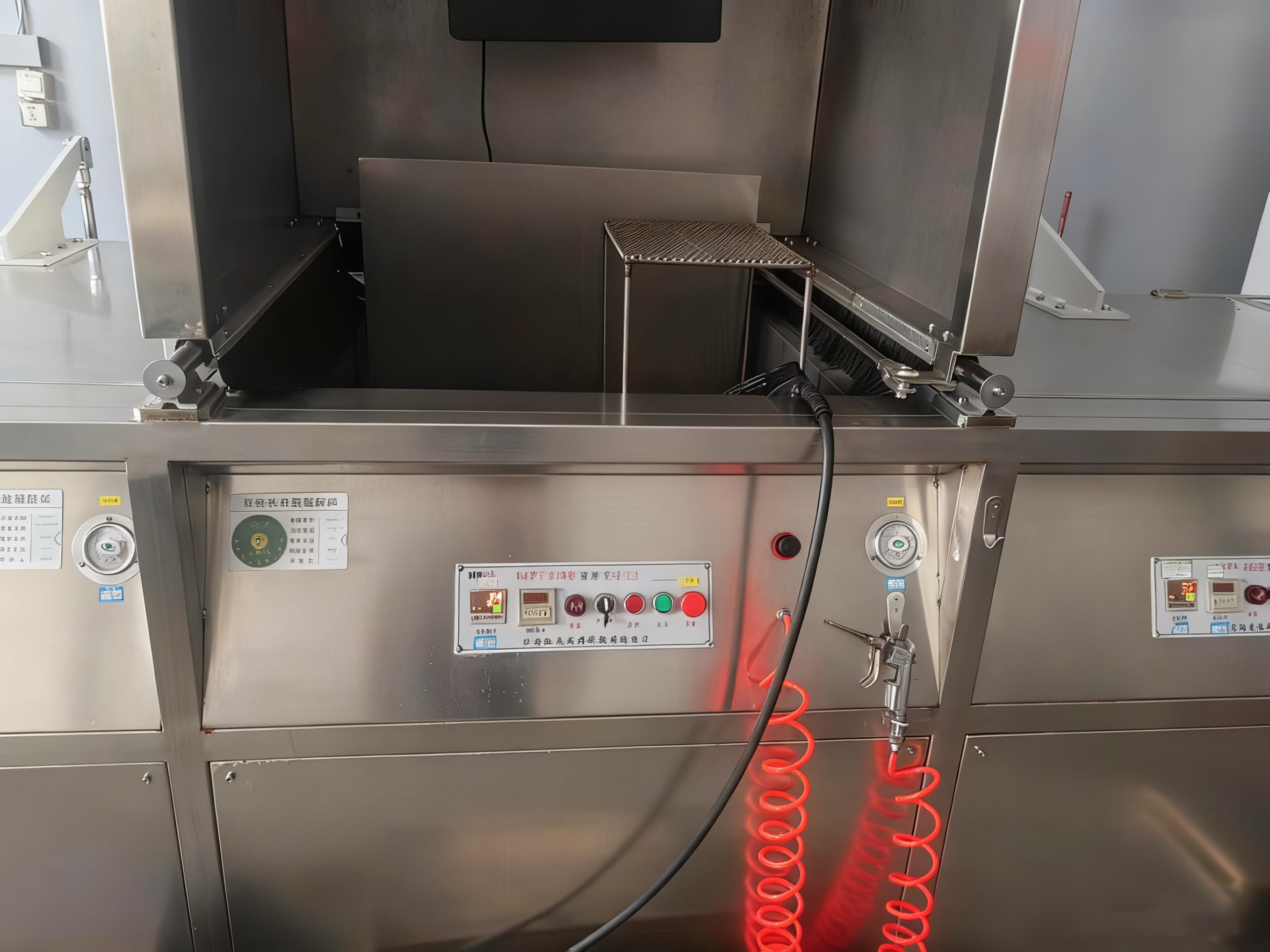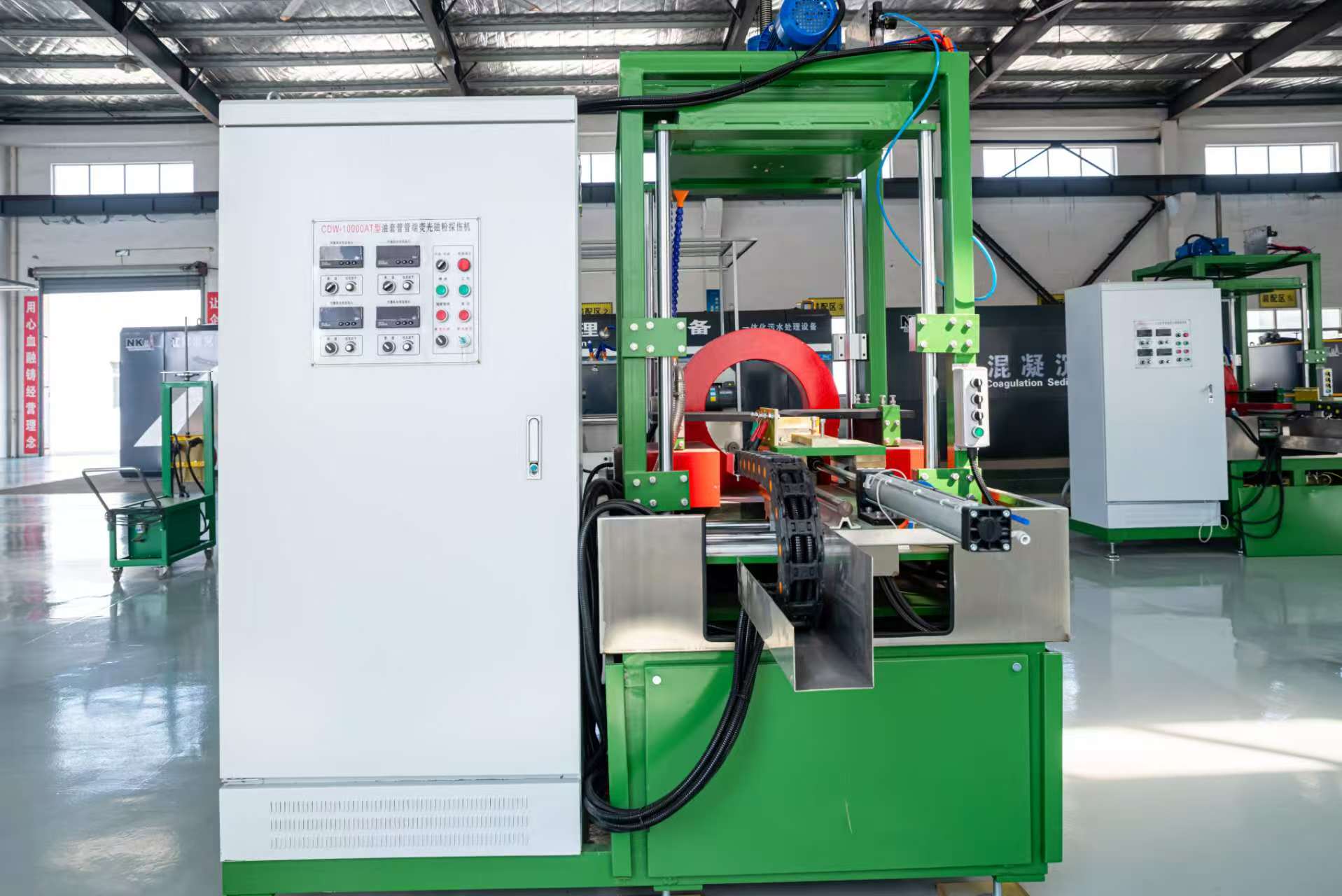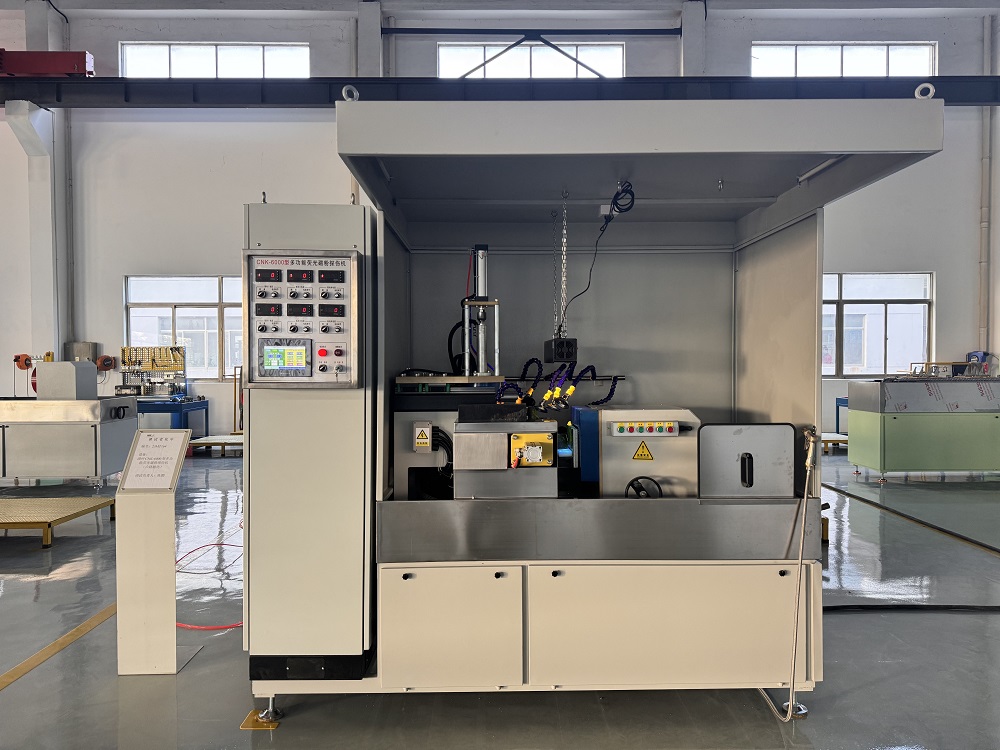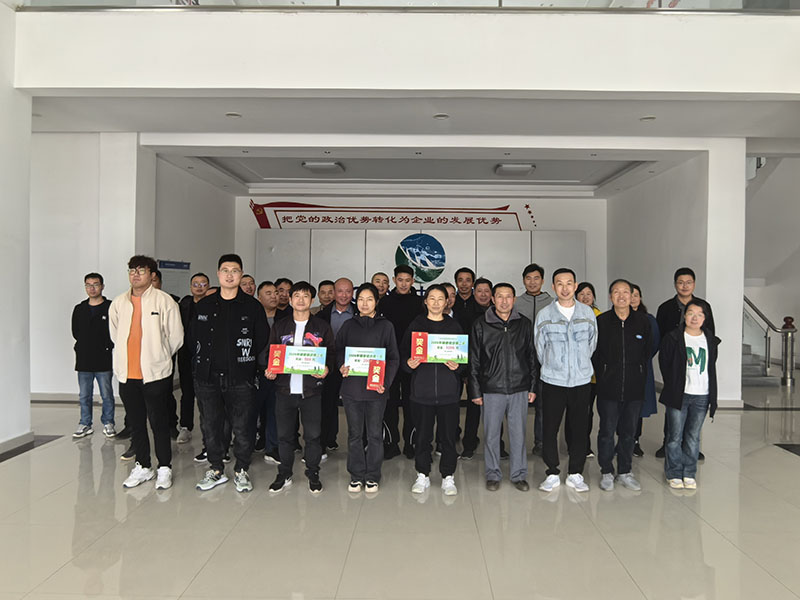Demagnetization in Industry: Principles, Methods, and Applications
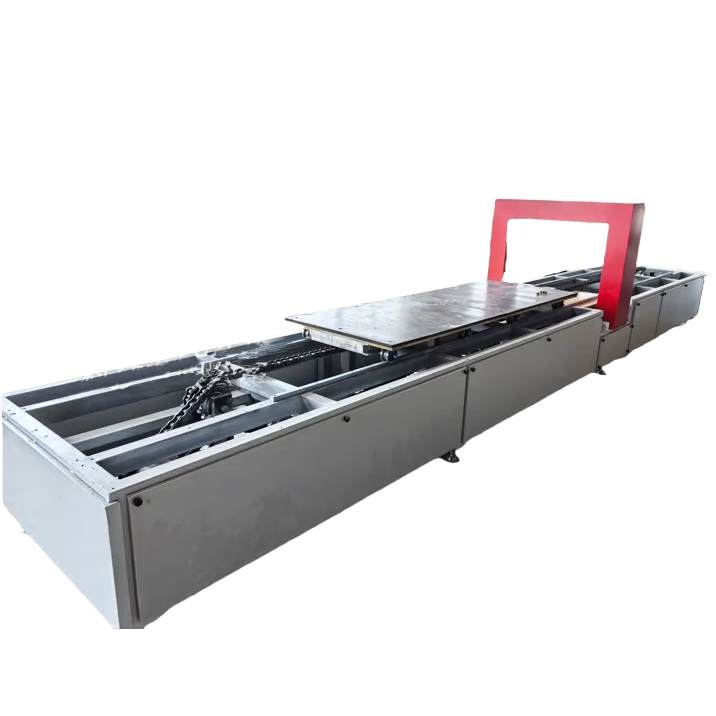
1. Principles of Demagnetization in Industry
Demagnetization in industry is a critical process for eliminating residual magnetic fields in ferromagnetic materials after magnetization. In industrial applications, particularly after magnetic particle inspection, workpieces often retain strong residual magnetism. Excessive residual magnetism can accelerate tool wear during machining, interfere with subsequent processes, and affect the performance of precision instruments and equipment. Therefore, demagnetization in industry is essential to restore materials to a magnetically neutral state, where the magnetic induction (B) equals zero.
The goal of demagnetization in industry is to disrupt the aligned magnetic domains caused by magnetization, returning them to a disordered, magnetically neutral state. This process is the reverse of magnetization. Two primary methods are used for demagnetization in industry: heat treatment demagnetization and reversing magnetic field demagnetization. Vibration demagnetization is less effective and rarely used in magnetic particle testing.
At Nuke NDT, we specialize in providing advanced demagnetization in industry solutions, offering state-of-the-art equipment and expertise to ensure your workpieces achieve optimal magnetic neutrality, enhancing production efficiency and quality.
1.1 Heat Treatment Demagnetization
Heat treatment demagnetization involves heating the material above its Curie temperature, transforming it from a ferromagnetic to a paramagnetic state, thereby eliminating its magnetism. This method is suitable for workpieces that can withstand high temperatures.
1.2 Reversing Magnetic Field Demagnetization
Reversing magnetic field demagnetization, the most widely used method in demagnetization in industry, employs the reverse process of technical magnetization. By repeatedly alternating the magnetic field direction while gradually reducing its intensity, the material’s hysteresis loop shrinks until it reaches a magnetically neutral state (B=0, H=0). This method requires two conditions:
- The demagnetizing magnetic field must continuously alternate in direction.
- The field strength must gradually decrease from a value sufficient to overcome the material’s coercivity.
2. Factors Affecting Demagnetization in Industry
Several scenarios necessitate demagnetization in industry:
- When repeated magnetization during inspection may interfere with subsequent magnetization processes.
- When residual magnetism affects downstream machining processes.
- When residual magnetism impacts testing equipment or precision instruments.
- When magnetic particles or iron filings adsorbed on friction surfaces increase wear.
- Other cases where demagnetization is required for operational or safety reasons.
However, demagnetization may not be necessary for:
- Workpieces made of high-permeability soft magnetic materials.
- Components used in strong magnetic fields.
- Workpieces subjected to heat treatment above the Curie temperature.
- Parts requiring further magnetization with a field stronger than the residual magnetism.
The difficulty of demagnetization in industry depends on the material type, magnetization current, and workpiece shape. Hard magnetic materials with high coercivity are more challenging to demagnetize, while soft and medium-soft magnetic materials are easier. Direct current (DC) magnetization penetrates deeper than alternating current (AC), making DC-magnetized workpieces harder to demagnetize using AC methods. Residual magnetism may reappear over time if not fully removed. Additionally, workpieces with a smaller demagnetization factor (higher length-to-diameter ratio) are easier to demagnetize, while those with a larger demagnetization factor may require serial connection or length extension for effective demagnetization in industry.
3. Methods of Demagnetization in Industry
Effective demagnetization in industry requires a magnetic field that continuously reverses direction and gradually decreases in intensity to zero. This can be achieved through:
- Reversing the Magnetic Field:
- Continuously rotating the workpiece in the magnetizing field.
- Alternating the direction of the magnetizing current.
- Rotating the magnetization device 180° to reverse the field.
- Reducing Magnetic Field Intensity:
- Gradually reducing the demagnetizing current.
- Moving the workpiece away from the demagnetizing field.
- Moving the demagnetizing field away from the workpiece.
The demagnetization frequency, or the rate of magnetic field reversal, is critical. For materials with low magnetic permeability or DC magnetization, a higher number of field reversals (higher demagnetization frequency) and smaller intensity decrements are needed. High-permeability materials or AC-magnetized workpieces require fewer reversals and larger intensity decrements.
3.1 Practical Demagnetization Techniques
The initial demagnetizing field should exceed the magnetization field, with each reversal reducing the field intensity gradually to effectively disrupt magnetic domain alignment. Common methods include:
- AC Attenuation Demagnetization: Uses alternating current with decreasing amplitude.
- AC Coil Demagnetization: Workpieces pass through a coil while the field alternates.
- Ultra-Low Frequency Current Demagnetization: Offers superior results compared to standard AC demagnetization due to its lower frequency.
For workpieces magnetized circumferentially, applying longitudinal magnetization before demagnetization improves results. Circumferential magnetization creates a closed magnetic circuit with no free poles, so introducing a longitudinal field creates a helical composite field, enhancing demagnetization in industry. For longitudinally magnetized workpieces, low-frequency demagnetization is more effective than high-frequency methods.
3.2 Specific Considerations
- AC vs. DC Magnetization: AC-magnetized workpieces are typically demagnetized using AC methods, while DC-magnetized workpieces require low-frequency current demagnetization. Thyristor-controlled AC magnetization may leave significant residual magnetism due to phase issues, necessitating low-frequency or thyristor-controlled current attenuation demagnetization.
- Coil Demagnetization: Workpieces should pass slowly through the coil center and move at least 1.5 meters away from the coil. Rotating the workpiece within the coil enhances demagnetization. Avoid stacking workpieces during coil demagnetization to prevent insufficient demagnetization due to the skin effect.
- Flat Coil or T-Shaped Yoke Demagnetization: The workpiece surface should be close to the coil plane or yoke poles, with relative motion ensuring all parts pass through the magnetic field. Multiple passes, similar to ironing, improve results.
- Orientation: For long workpieces, place the demagnetization coil in an east-west direction to minimize geomagnetic interference.
3.3 Evaluating Demagnetization Effectiveness
Demagnetization effectiveness is typically measured with specialized instruments, with residual magnetism ideally below 0.3 mT (3 Gauss). For less stringent requirements, a simple test involves checking if the workpiece attracts a pin; no attraction indicates successful demagnetization in industry.
4. Post-Demagnetization Processing
Post-processing involves cleaning and marking demagnetized workpieces. If residual magnetic particles do not affect usage, cleaning may be unnecessary. However, if particles interfere with subsequent processes, cleaning is required to remove surface magnetic particles and oil stains using solvents or drying methods. For workpieces tested with water-based magnetic suspensions, dehydration and rust-preventive oil (a 1:2 mixture of S* compound and kerosene) can prevent surface corrosion. The oil tank should have a cover to prevent evaporation and a valve to drain water.
Qualified workpieces must be clearly marked using methods such as stamping, etching, coloring, labeling, or sealing, as specified by design or process departments. Marks should be permanent and not affect subsequent inspections or usage. Qualified and unqualified workpieces must be stored separately to avoid confusion.
Conclusion
Demagnetization in industry is a vital process for ensuring the quality and functionality of ferromagnetic components. By employing heat treatment or reversing magnetic field methods, industries can effectively eliminate residual magnetism, enhancing machining precision and equipment performance. Understanding the factors affecting demagnetization and applying appropriate techniques ensures optimal results, making demagnetization in industry an indispensable step in modern manufacturing.
Partner with Nuke NDT for industry-leading demagnetization in industry solutions. Our advanced equipment, tailored processes, and expert support ensure your production line achieves superior magnetic neutrality, boosting efficiency and product quality. Contact us to learn more about our innovative demagnetization systems.


